Abstract
1. A study has been made of the temperature changes associated with the passage of a single impulse in the non-myelinated fibres of the pike olfactory nerve. 2. The initial heat occurs in two phases: a burst of positive heat, followed by an evolution of negative heat. The positive and negative heats, and the net initial heat, are temperature-dependent. 3. At 0 degrees C the measured positive initial heat is 44.2 mucal/g.impulse; and the corresponding negative initial heat is 48.9 mucal/g.impulse. There is thus a net initial heat that is negative, of about 4.7 mucal/g.impulse. 4. The positive heat has a positive temperature coefficient, being increased by a factor of 1.86 when the temperature is rasied from 0 degrees C to 10 degrees C. 5. The negative initial heat also increases when the temperature is raised, but less than the positive initial heat. As a result, the net initial heat tends to become positive at higher temperatures. 6. Because of temporal dispersion of the action potential over the face of the thermopile, the observed temperature changes are smaller than those that occur at a single point in the nerve close to the stimulating cathode. The value of the positive heat at 0 degrees C corrected for temporal dispersion is estimated to be about 62 mucal/g.impulse: the corresponding value for the negative heat is about 67 mucal/g.impulse. 7. All records were analysed in terms of only two phases of initial heat (one positive, one negative). No analysis required four phases; but it is unclear whether this finding reflects a true absence of four phases, or merely the inability of the recording equipment to resolve them. 8. The positive heat seems to be derived from two sources. First, there is a dissipation of the free energy stored in the membrane capacity. Secondly, there is an evolution of heat corresponding with a decrease in entropy of the membrane dielectric with depolarization.
Full text
PDF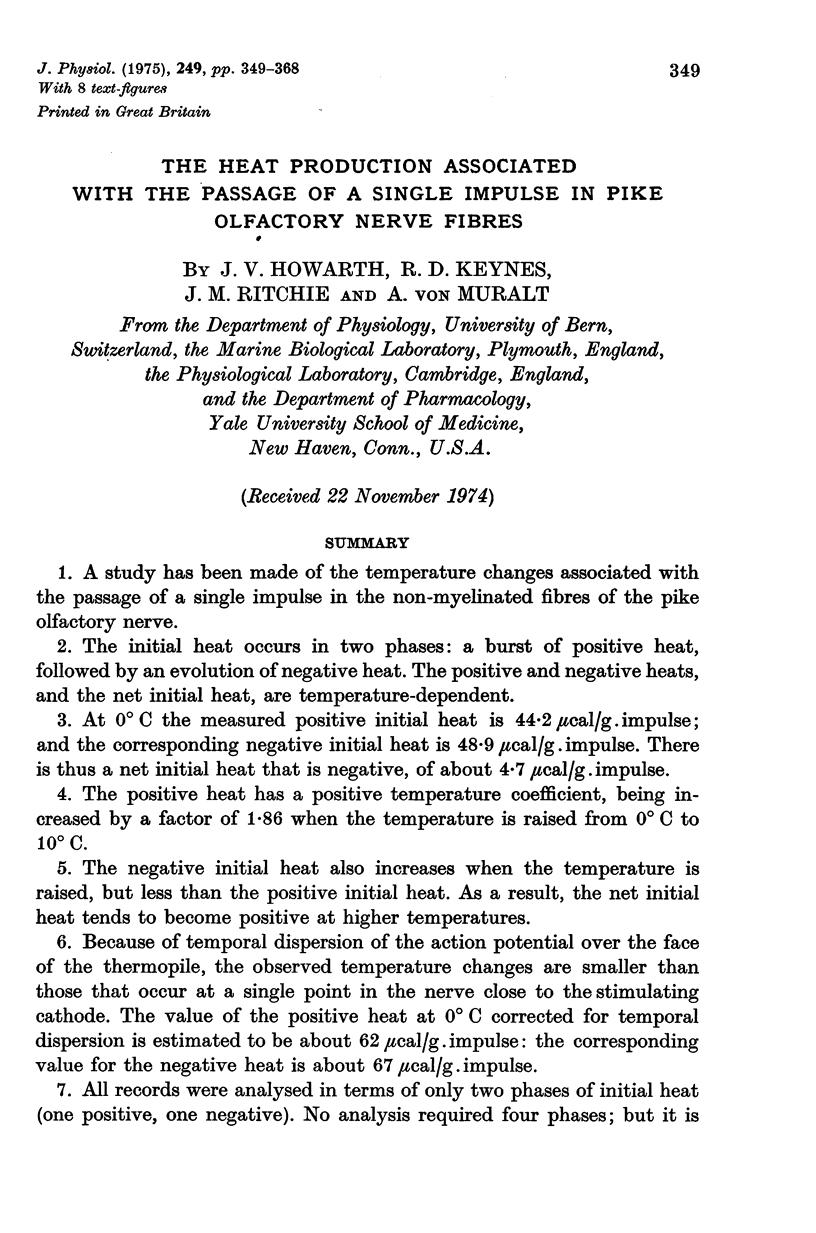
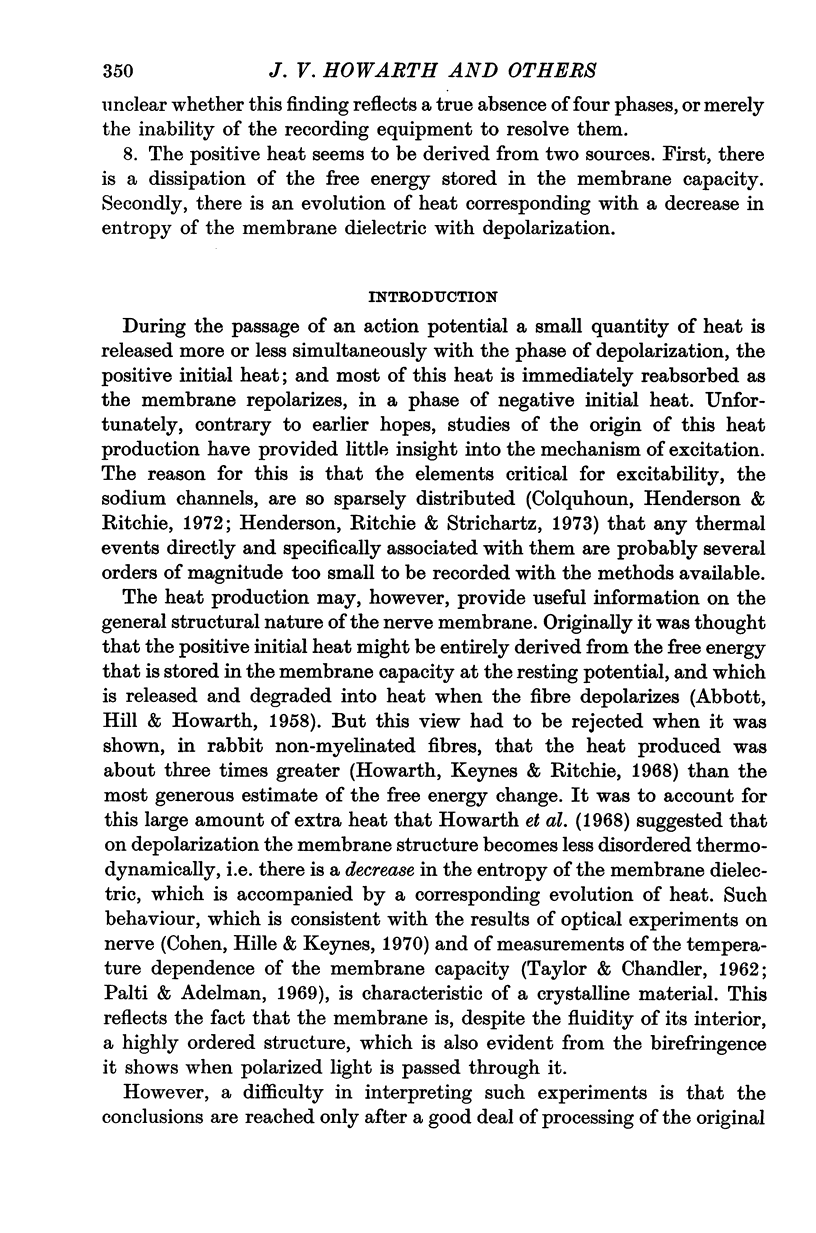
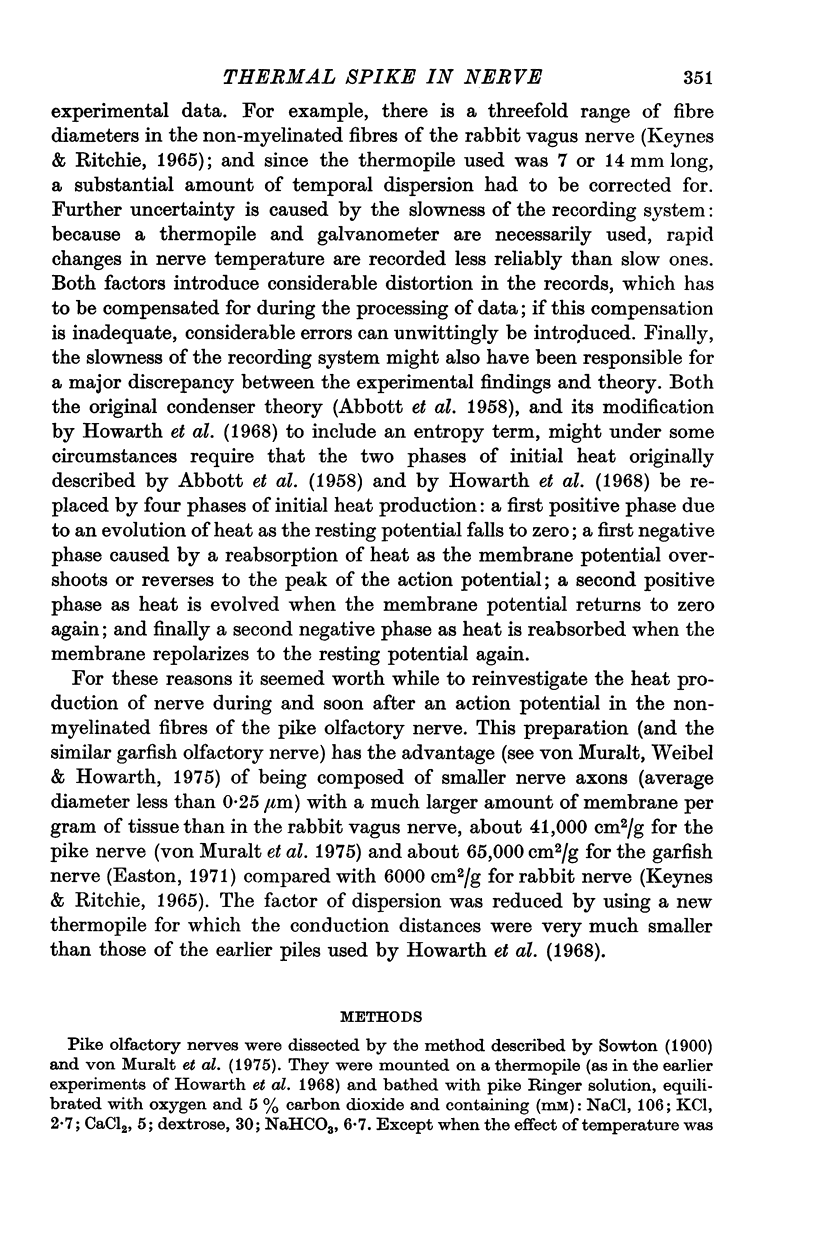
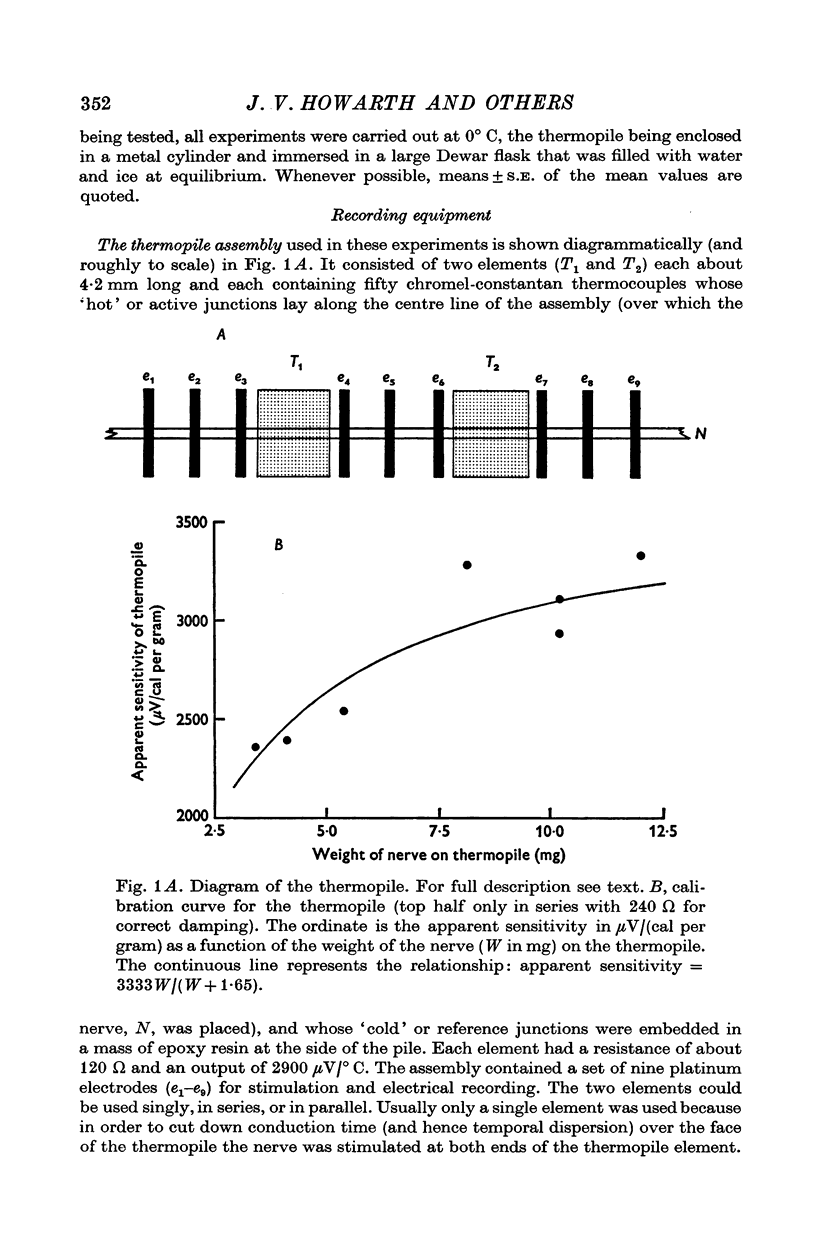
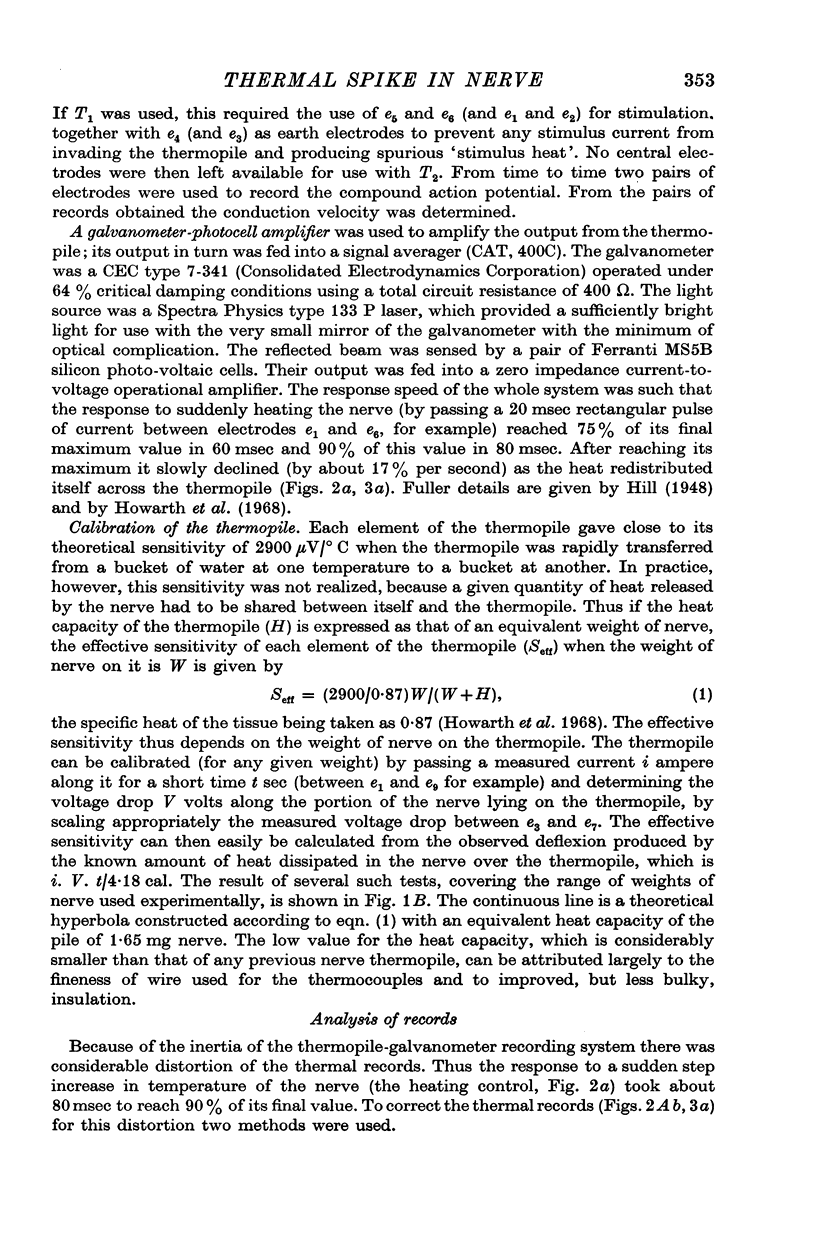
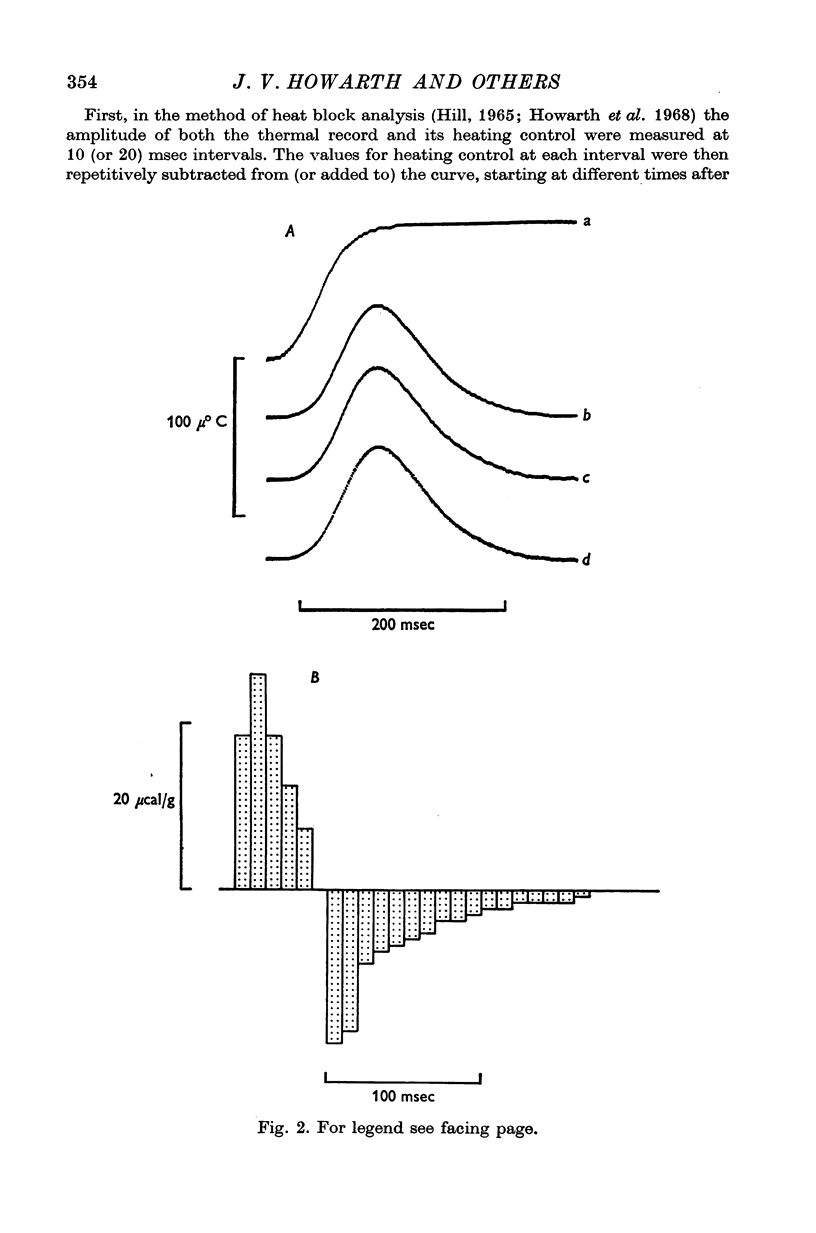
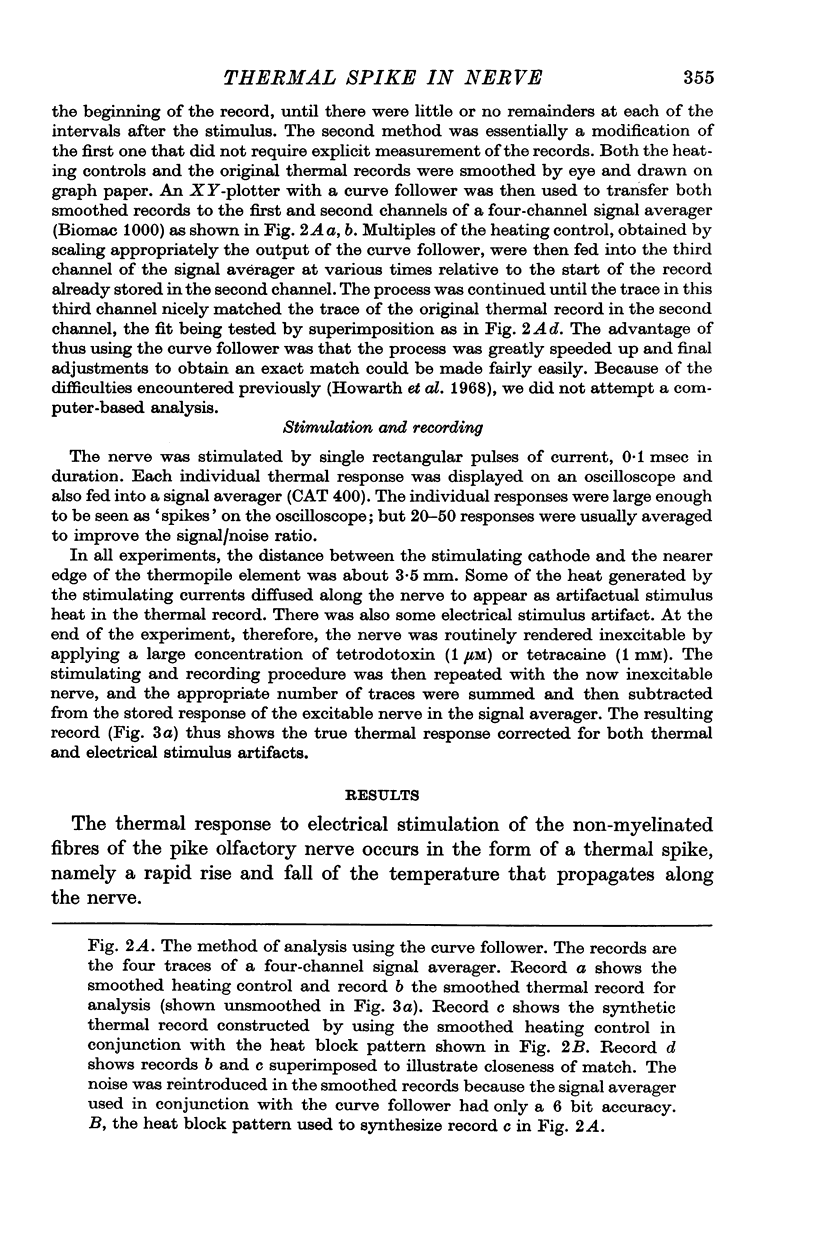
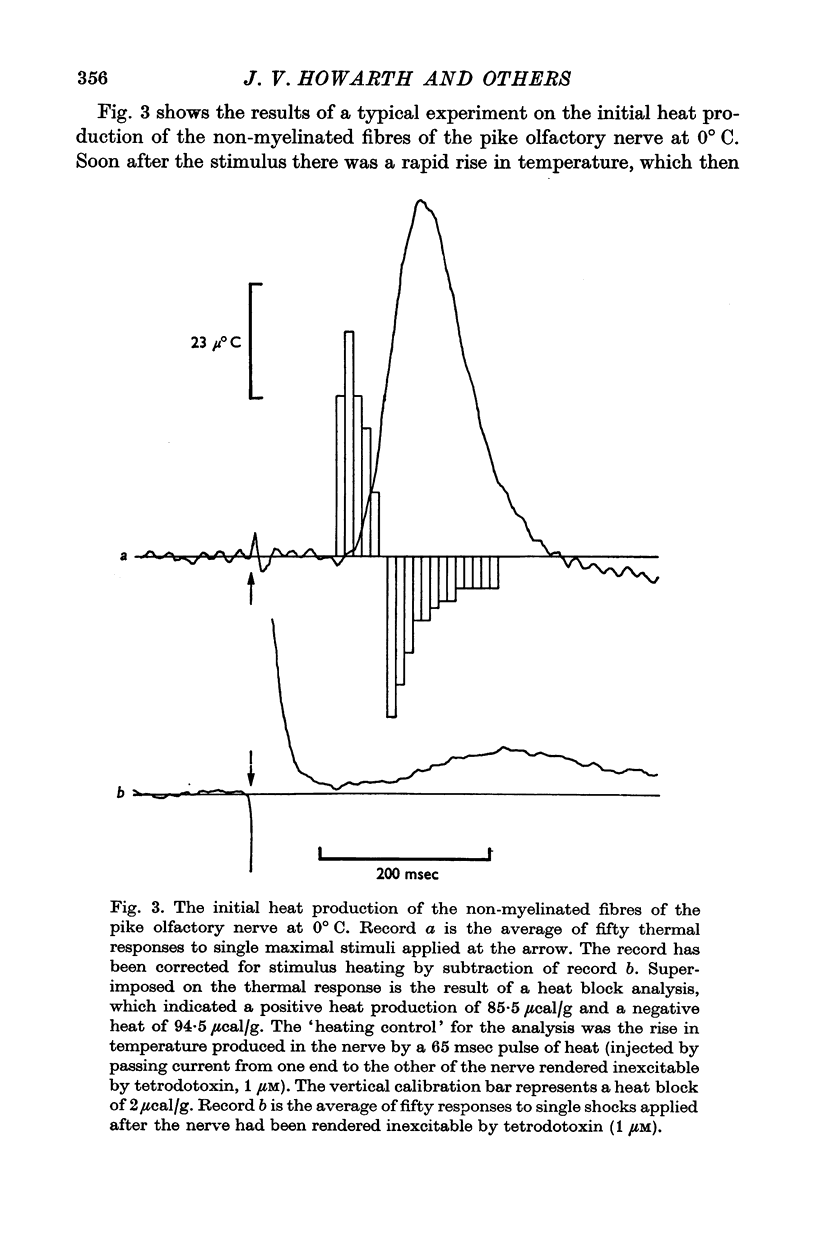
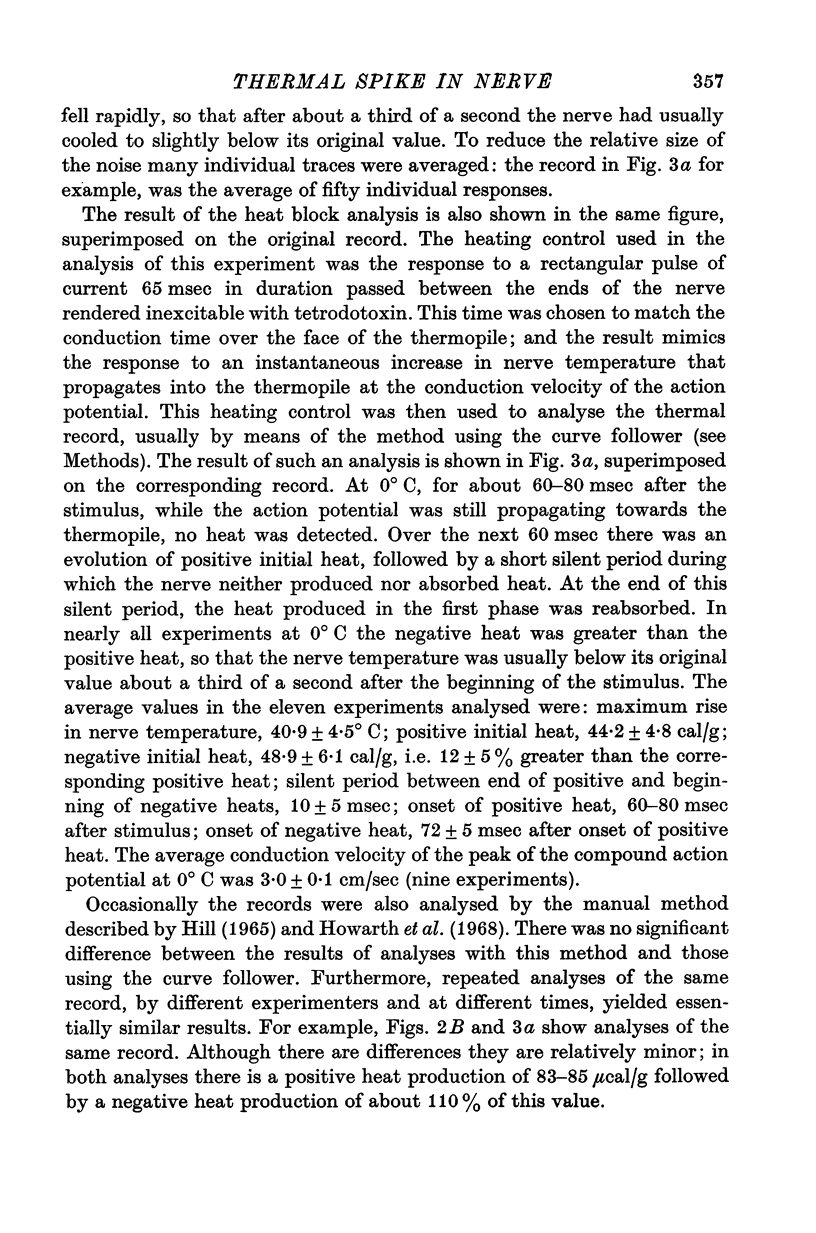
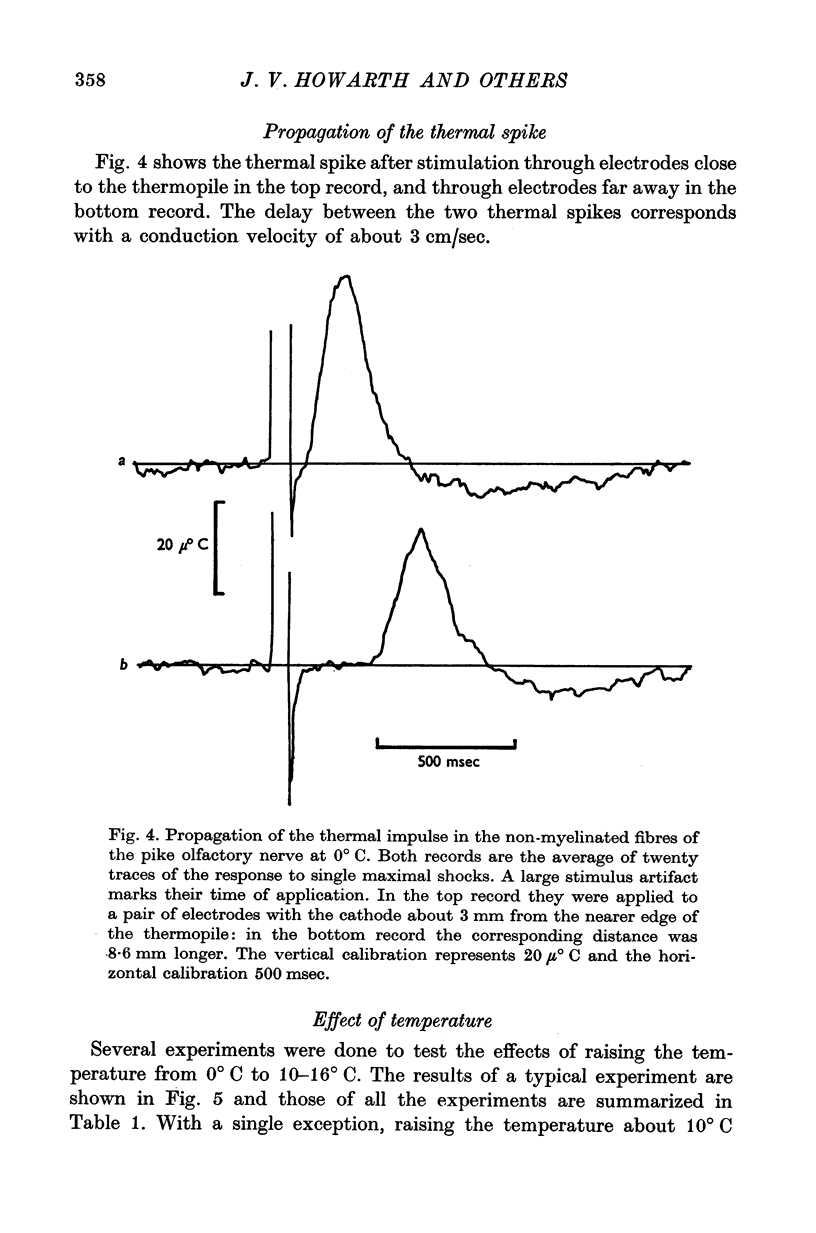
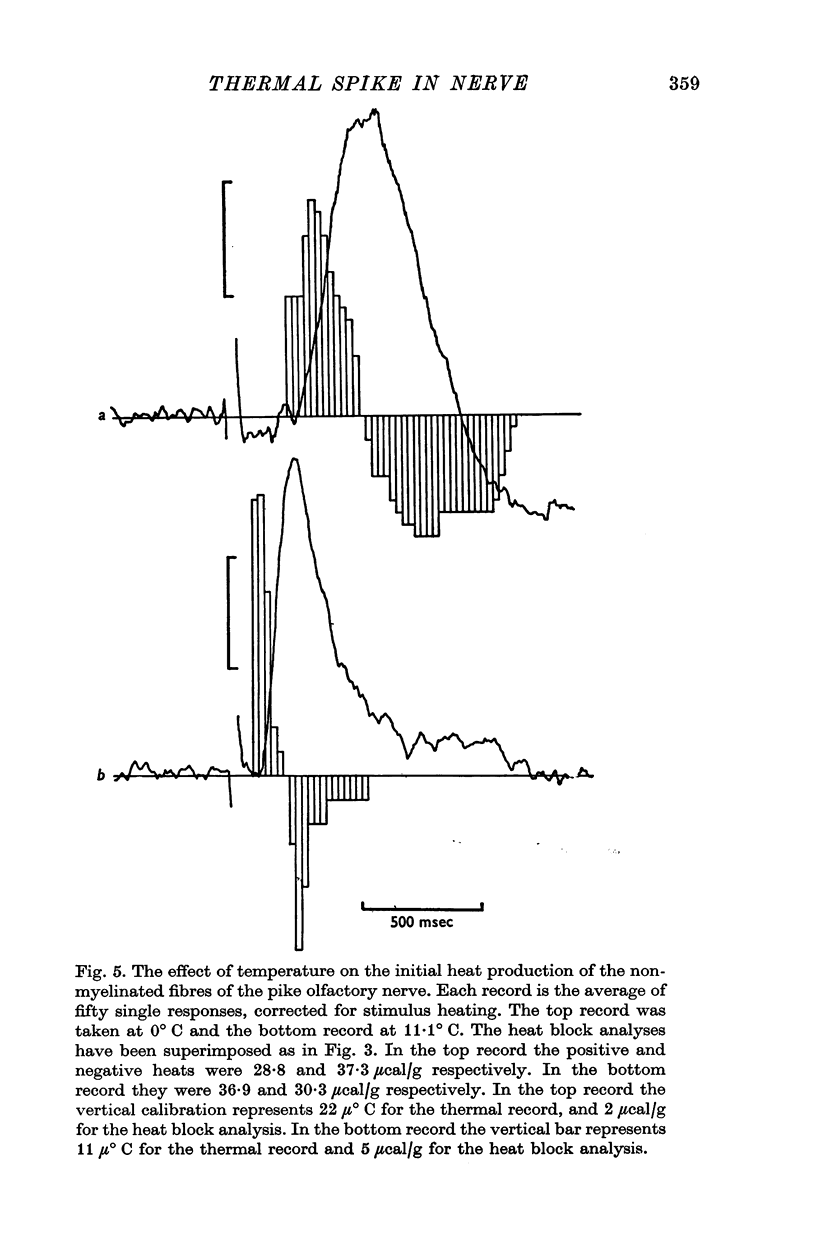
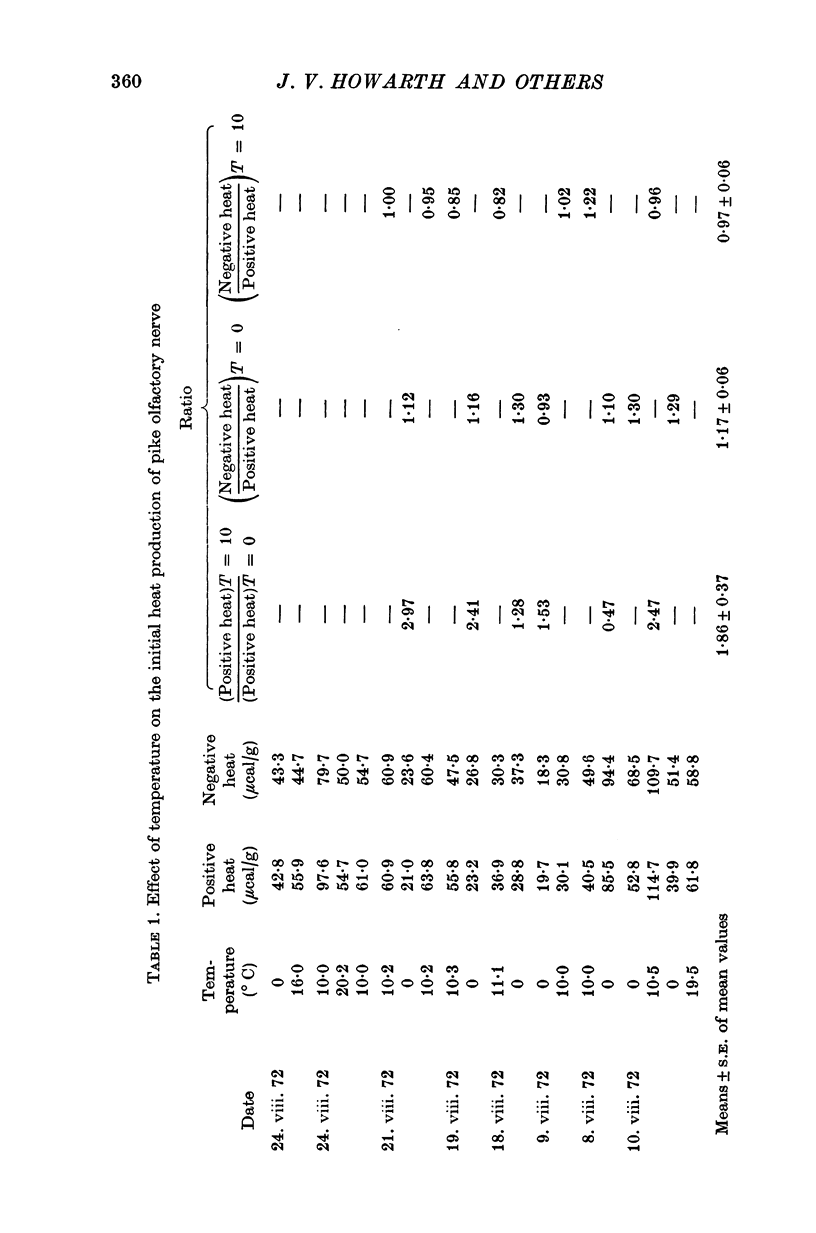
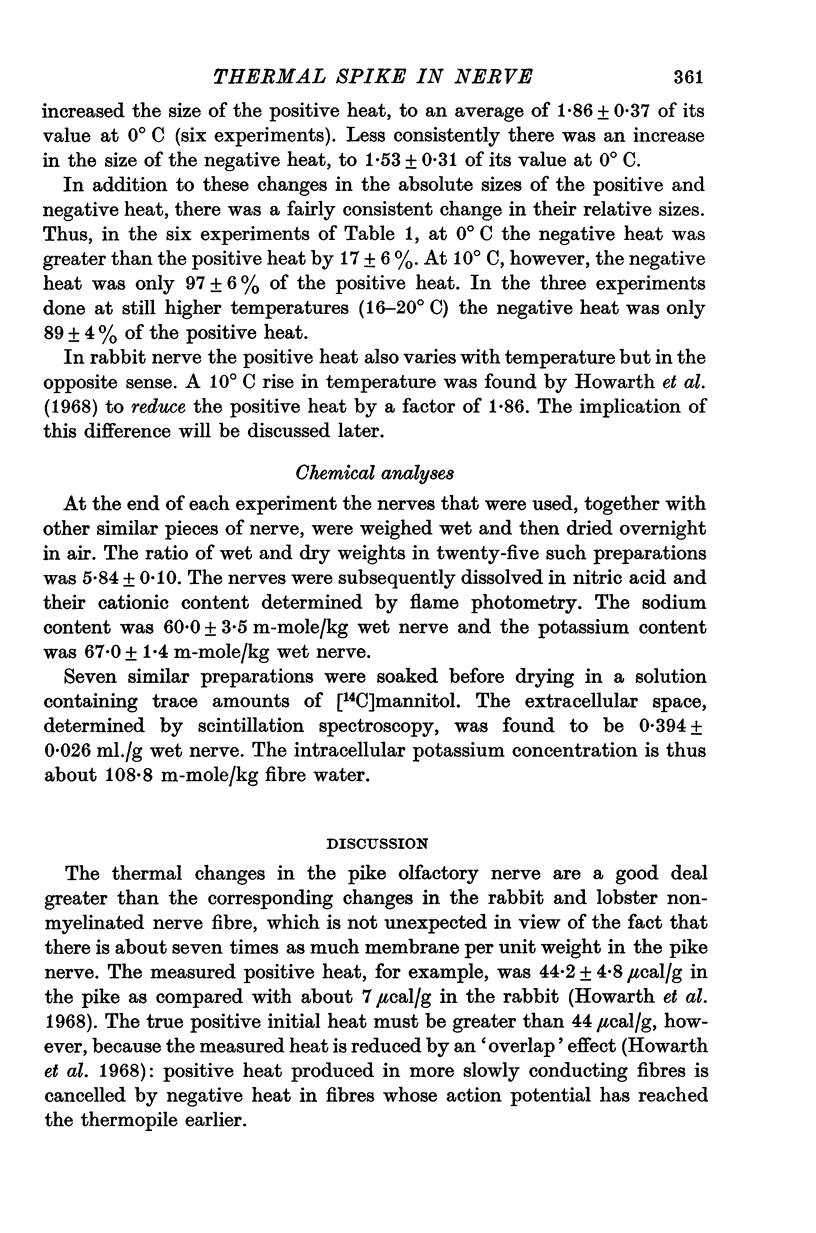
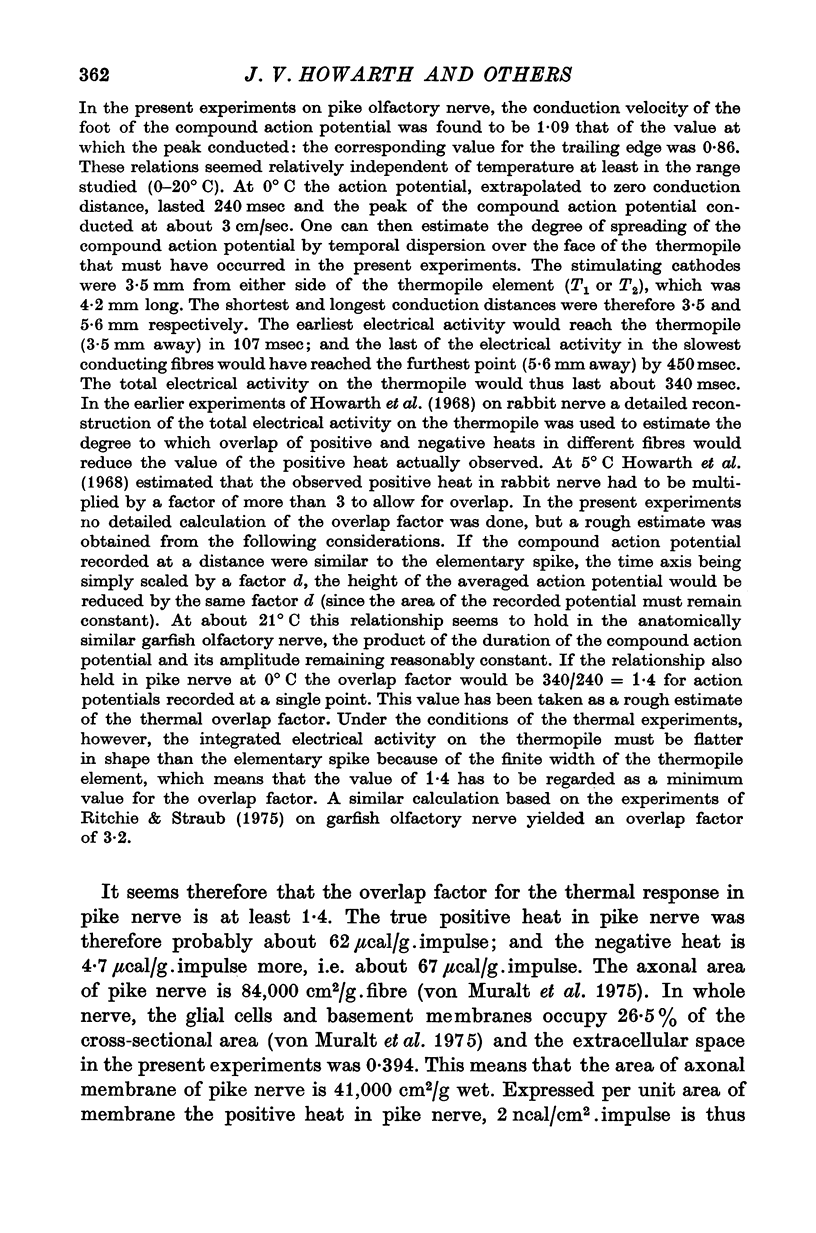
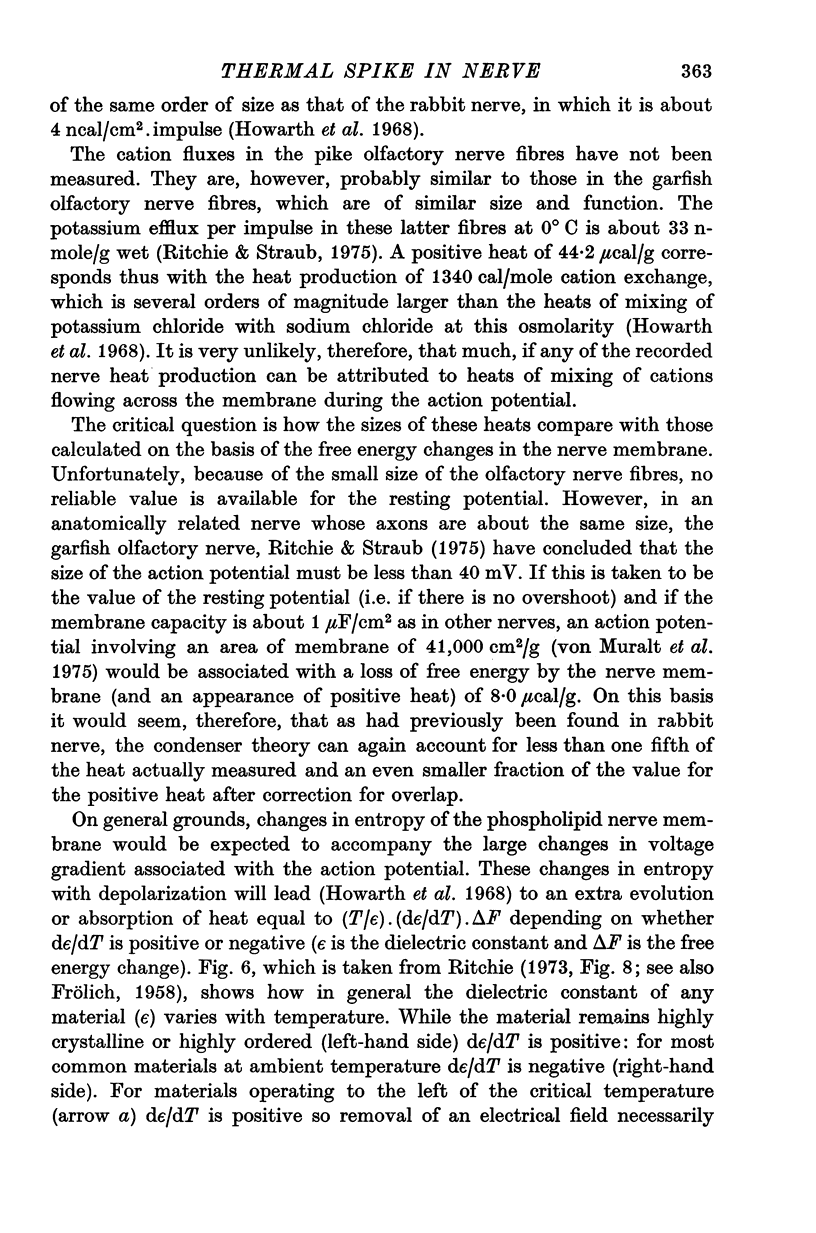
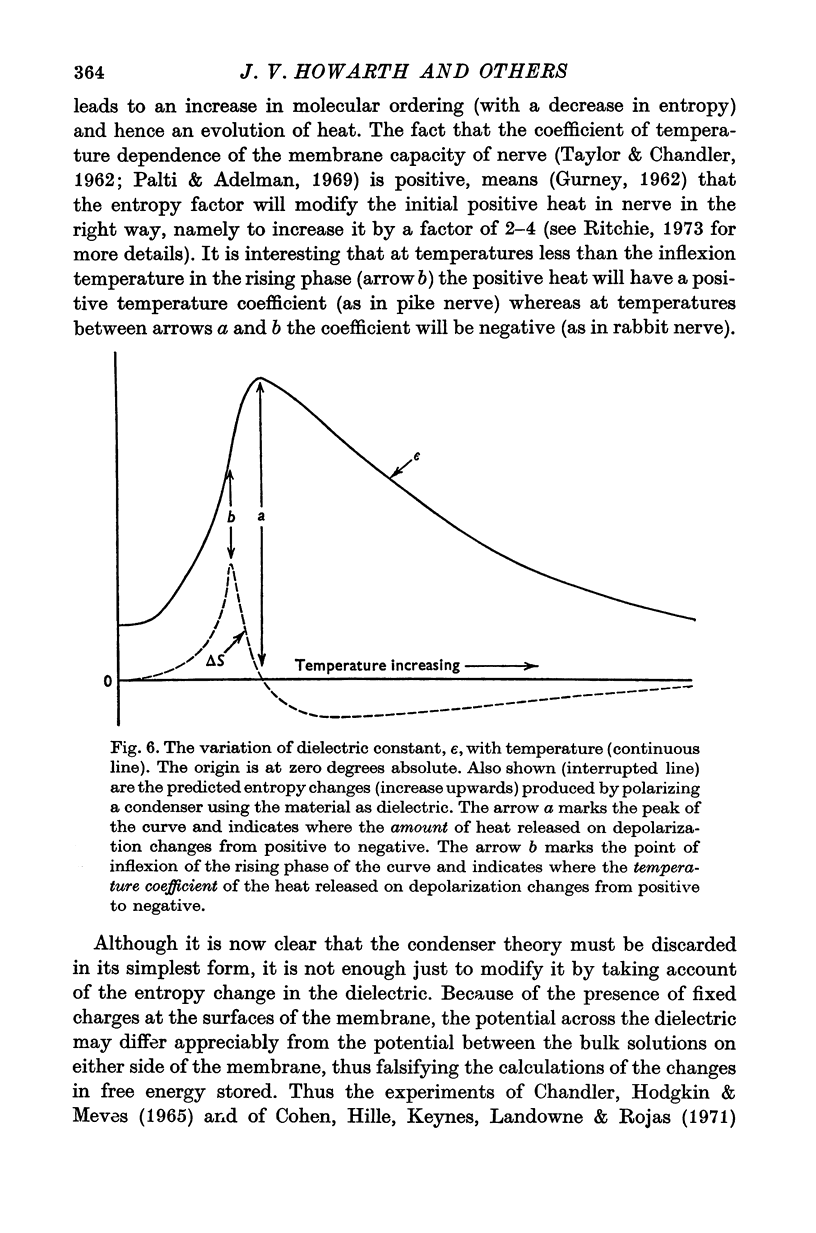
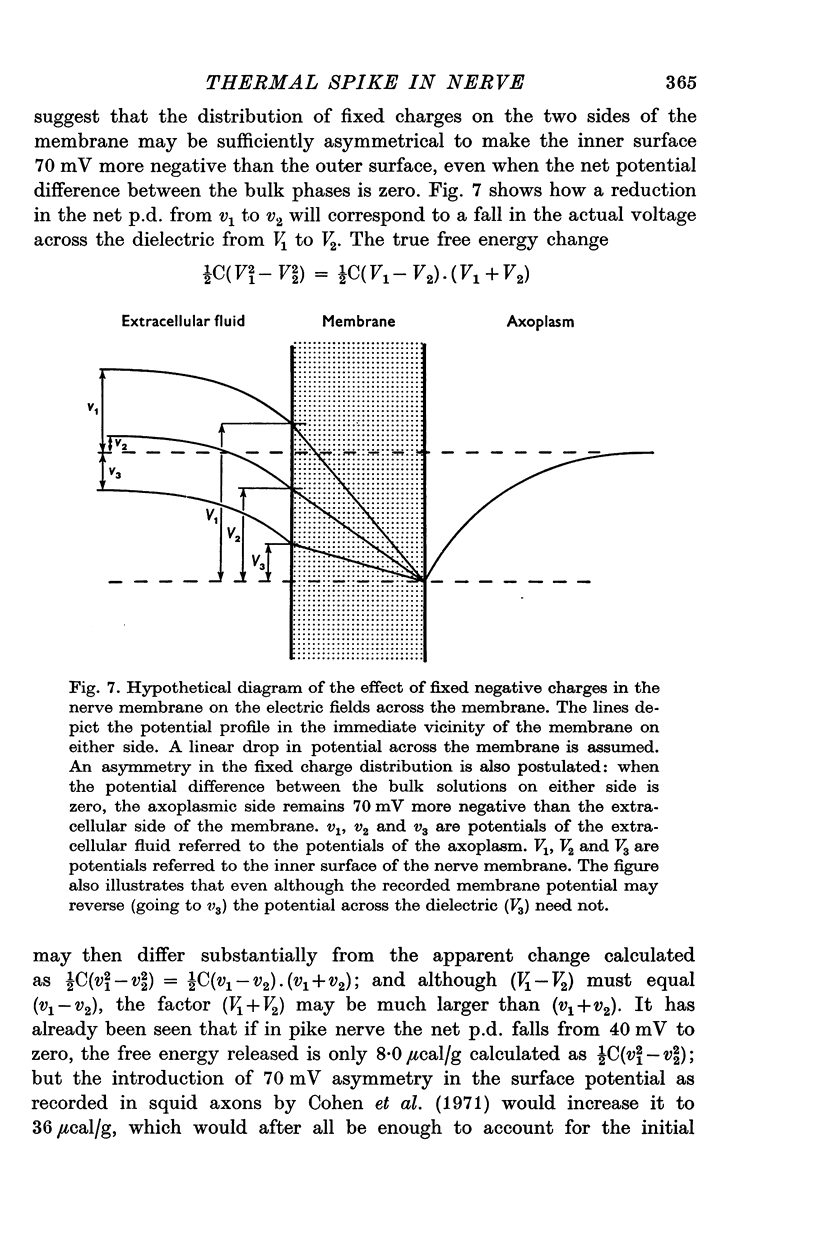
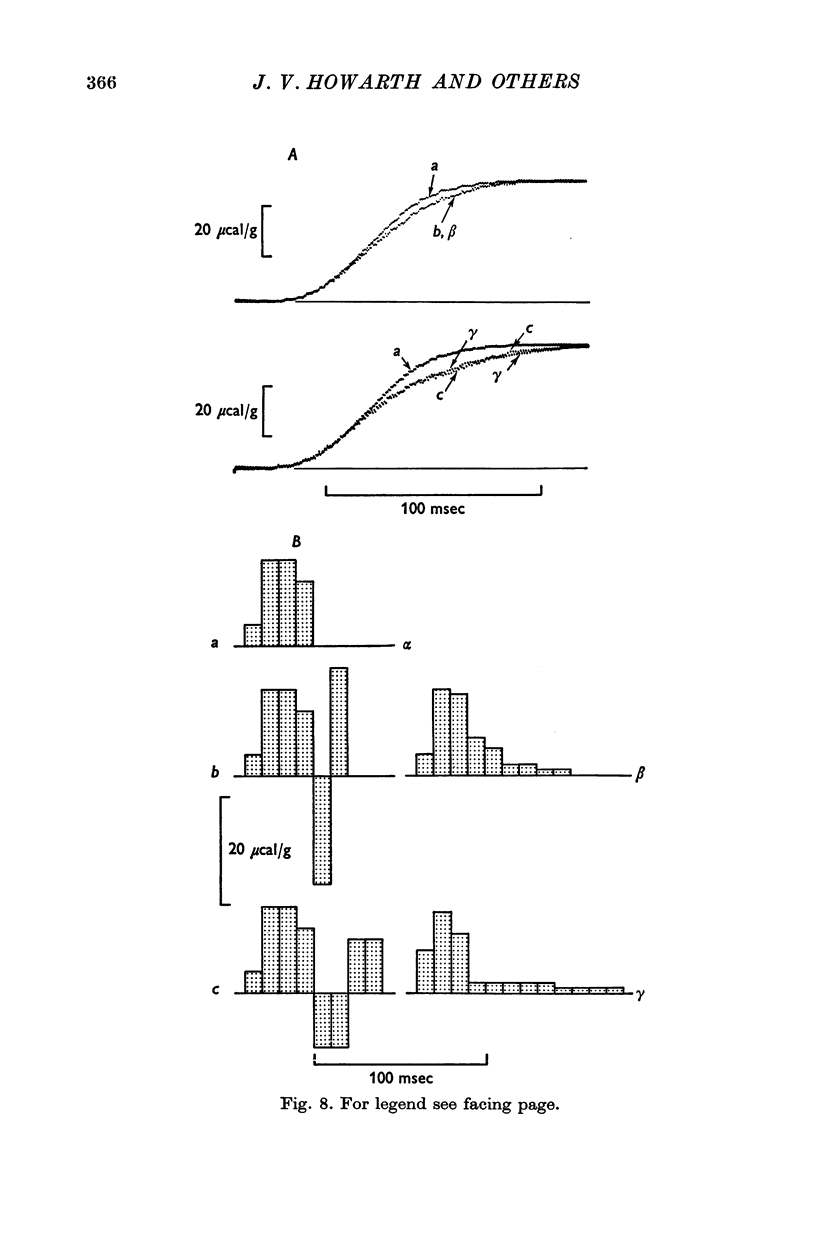
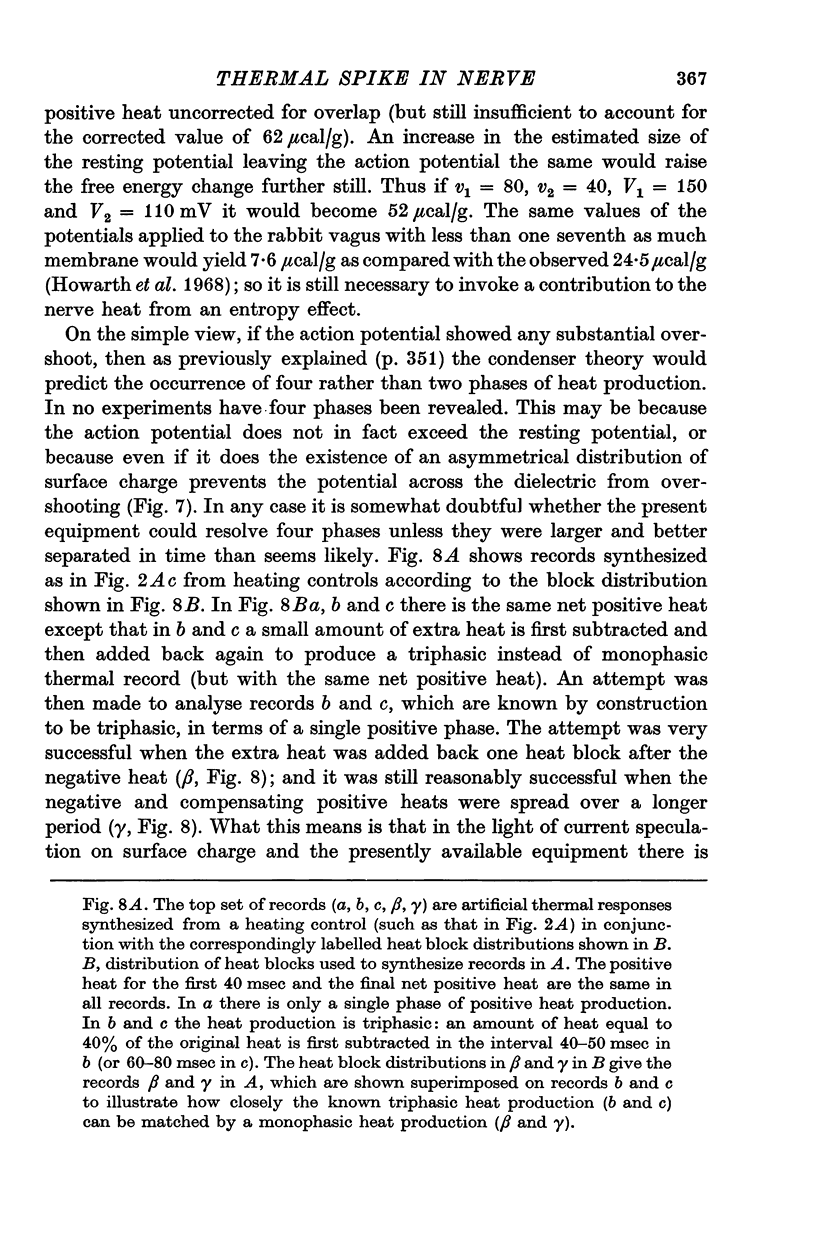

Selected References
These references are in PubMed. This may not be the complete list of references from this article.
- ABBOTT B. C., HILL A. V., HOWARTH J. V. The positive and negative heat production associated with a nerve impulse. Proc R Soc Lond B Biol Sci. 1958 Feb 18;148(931):149–187. doi: 10.1098/rspb.1958.0012. [DOI] [PubMed] [Google Scholar]
- Chandler W. K., Hodgkin A. L., Meves H. The effect of changing the internal solution on sodium inactivation and related phenomena in giant axons. J Physiol. 1965 Oct;180(4):821–836. doi: 10.1113/jphysiol.1965.sp007733. [DOI] [PMC free article] [PubMed] [Google Scholar]
- Cohen L. B., Hille B., Keynes R. D. Changes in axon birefringence during the action potential. J Physiol. 1970 Dec;211(2):495–515. doi: 10.1113/jphysiol.1970.sp009289. [DOI] [PMC free article] [PubMed] [Google Scholar]
- Cohen L. B., Hille B., Keynes R. D., Landowne D., Rojas E. Analysis of the potential-dependent changes in optical retardation in the squid giant axon. J Physiol. 1971 Oct;218(1):205–237. doi: 10.1113/jphysiol.1971.sp009611. [DOI] [PMC free article] [PubMed] [Google Scholar]
- Colquhoun D., Henderson R., Ritchie J. M. The binding of labelled tetrodotoxin to non-myelinated nerve fibres. J Physiol. 1972 Dec;227(1):95–126. doi: 10.1113/jphysiol.1972.sp010022. [DOI] [PMC free article] [PubMed] [Google Scholar]
- Easton D. M. Garfish olfactory nerve: easily accessible source of numerous long, homogeneous, nonmyelinated axons. Science. 1971 May 28;172(3986):952–955. doi: 10.1126/science.172.3986.952. [DOI] [PubMed] [Google Scholar]
- Henderson R., Ritchie J. M., Strichartz G. R. The binding of labelled saxitoxin to the sodium channels in nerve membranes. J Physiol. 1973 Dec;235(3):783–804. doi: 10.1113/jphysiol.1973.sp010417. [DOI] [PMC free article] [PubMed] [Google Scholar]
- Howarth J. V., Keynes R. D., Ritchie J. M. The origin of the initial heat associated with a single impulse in mammalian non-myelinated nerve fibres. J Physiol. 1968 Feb;194(3):745–793. doi: 10.1113/jphysiol.1968.sp008434. [DOI] [PMC free article] [PubMed] [Google Scholar]
- Keynes R. D., Ritchie J. M. The movements of labelled ions in mammalian non-myelinated nerve fibres. J Physiol. 1965 Jul;179(2):333–367. doi: 10.1113/jphysiol.1965.sp007666. [DOI] [PMC free article] [PubMed] [Google Scholar]
- Ritchie J. M. Energetic aspects of nerve conduction: the relationships between heat production, electrical activity and metabolism. Prog Biophys Mol Biol. 1973;26:147–187. doi: 10.1016/0079-6107(73)90019-9. [DOI] [PubMed] [Google Scholar]
- Ritchie J. M., Straub R. W. The movement of potassium ions during electrical activity, and the kinetics of the recovery process, in the non-myelinated fibres of the garfish olfactory nerve. J Physiol. 1975 Jul;249(2):327–348. doi: 10.1113/jphysiol.1975.sp011018. [DOI] [PMC free article] [PubMed] [Google Scholar]


